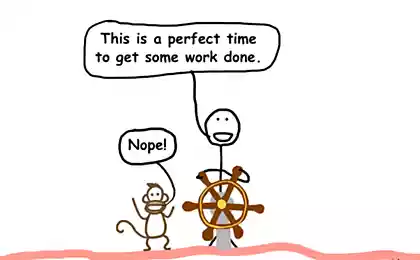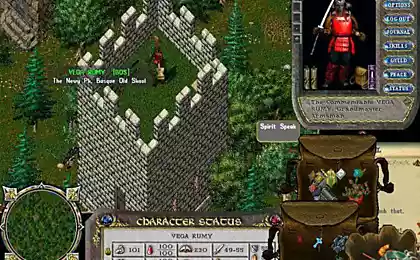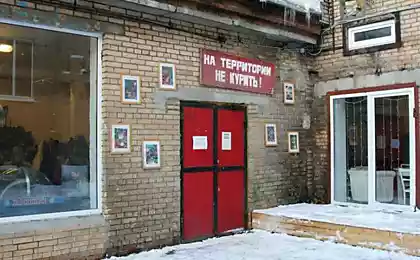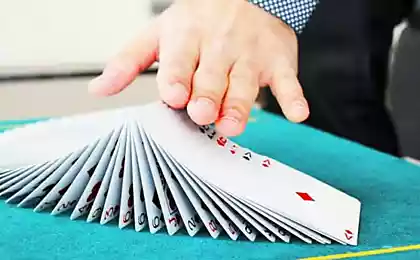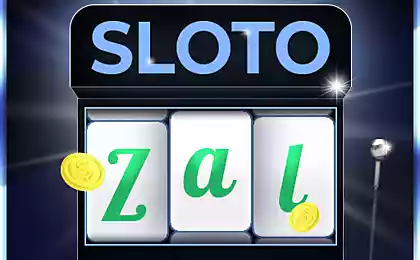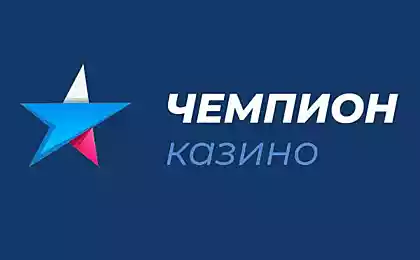673
Tricked out gaming PC
For me personally, it's not just an antique toy and the first home computer I own included, worked on and off.
There will be 15 pictures.
1.
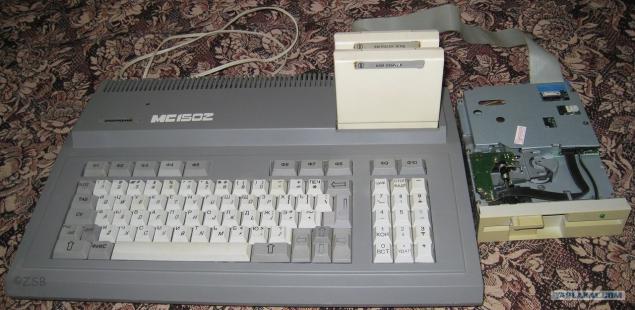
In the original looked like on prividёnnom FREEZE (that's useful when the digitized video):
Features such had (taken from the all-knowing Wiki):
CPU: KM1810VM88 at a clock frequency of 5, 33 MHz
Bit Processor: 16-bit
Data bus width: 8 bits
Memory: RAM - 128 KB, including video RAM
Video Display: CGA, 32K
Frequency of vertical synchronization: 50 Hz
The rate of input-output on magnetic tape: 1200 baud
The rate of exchange via the serial interface: 9600
The range of frequencies an audio signal generation: 50-16000 Hz
Number of channel expansion connectors: 2
Warm-up time after power is not more than 2 minutes.
Power Consumption: 30 W
Expansion Module RAM: 512 KB
2.
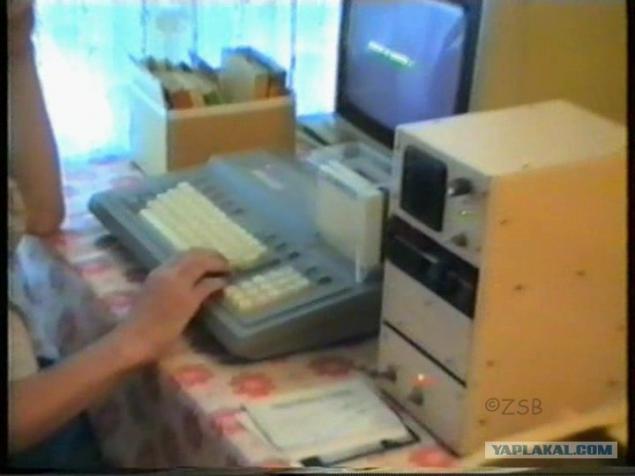
Actually, a little more detail about the processor, for those to whom the phrase "the CPU: KM1810VM88" says nothing. In fact it is a very distant relative of today's PCs. Surely many of you know about it when the popular "Pentium". Before them was a large family x86-s (eg 286, 386 and 486).
So, when it was 8086 and the first 16-bit processor. What would it udeshivit was created by the 8088 processor, which was essentially a 16-bit 8086, but all of its outer electron binding was 8-bit. A sort of a cripple, but the computer on it treated in the production cheaper.
What am I? And besides that KM1810VM88 is nothing like a Soviet clone of 8088!
Yes, there was a slow, hanging when he wanted to. But most DOSovkih games allow you to play. For example in the FREEZE GPCGA - AVTOS about Formula 1.
3.

Let us consider it in more detail, after more than ten years.
Top left - power LED. Power supply built. Top right - two slots expansion slots.
The keyboard is more or less clear to all (English layout conforms to current). Keys unusual Russified, but understand it is quite possible.
4.
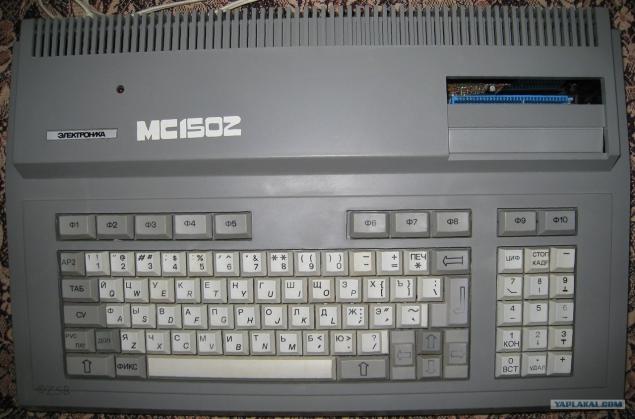
As pictured above, it is clear that one of the lids slots missing, use this and look inside:
5.

Then look at the PC itself. On the side walls, front and nothing to the right. On the left is a switch built-in power supply unit (for some reason your computer does not turn off, but only disables):
6.
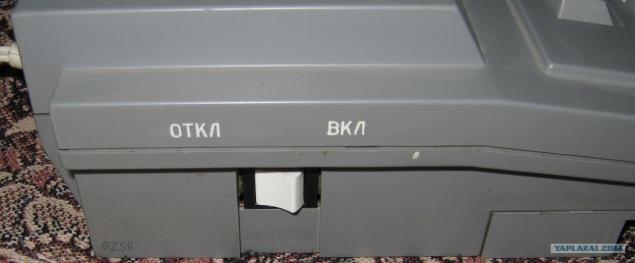
Well, most of the lard - is the rear interface panel.
Consider the left -napravo.
The most important element is, of course, the button Reset, Russified as "Reset».
"Magician" is not a magic jack, but only an interface to connect the recorder. But do not listen to music, and reading program (yes, before the tape was stored programs and data).
"Video" - to connect the monitor.
IRPR and IRPS - a domestic counterparts parallel and serial interfaces, ie Of LPT and COM, in modern computers (if at all).
7.

And most importantly - a factory label. By which we can say that the computer was made in February 1994 and was released at least 1875 pieces.
8.
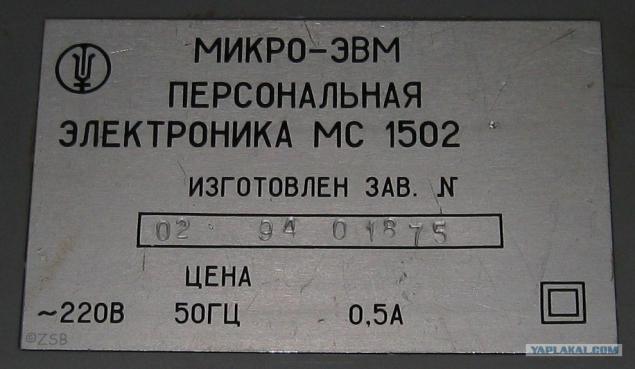
Consider additional modules. Whom I have there already three. Ie the one you still unknown
The first and most important - a module with an additional 512 KB of memory (exactly polmegabayta), which together with the existing 128 KB 640 KB allows a posh.
In the photo attached to the comparison of the standard cartridge Dandy.
9.

He also compared with two modules of 2GB DDR2 each (a total of 16,000 gives greater volume at significantly faster speed of access).
10.

Then, most important, there is a floppy disk drive controller (a floppy disk), which allows you to connect to a PC for the five-inch floppy disk drive and work with them. Because if you can see from the performance characteristics, no hard drive from the computer and there is no trace. And to get started, after turning, it is necessary first of all to load DOS.
In the photo the same dendivsky cartridge. Flex interchangeable - soldered tightly.
11.
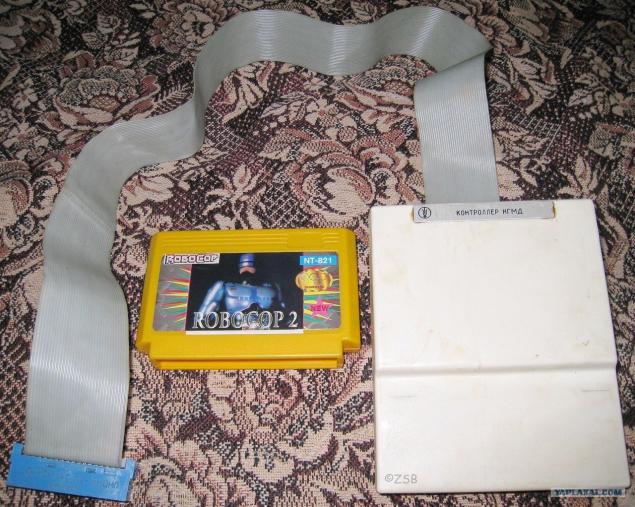
This is connected with the controller 5-inch disk drive. For comparison, on the right put the classic, well-known, but now almost extinct, 3-yoh inch floppovodik.
Immediately it should be said that the second photo sistemnik in its unique. Also at the photos and you will notice a subsequent cover of thick plexiglass (Bent over a candle or stove) for expansion modules.
And the system unit completely homemade (dad was a master of all trades). It consisted of power supply, the drive and the audio amplifier with speaker.
12.
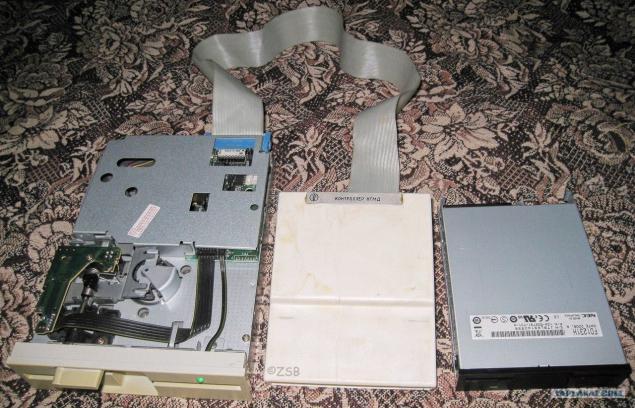
Well, the mysterious third expansion module has been a kind of "random access memory", which in fact was a direct analog of the game cartridge, traditionally laid side by side. And what is written in it, we learn in the next photo
13.
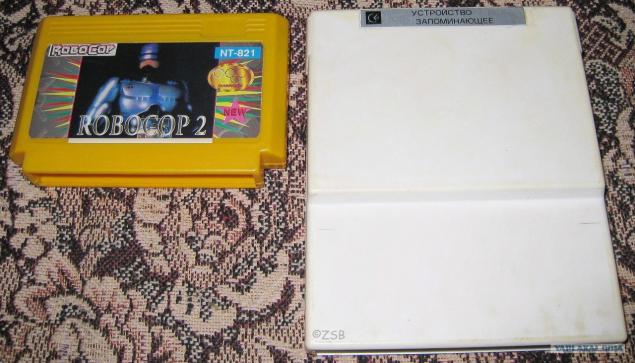
The photo above is visible hendmeyd (ie, handmade) label that is stitched BASIC module K. What is K, hard to say.
Ie Having the computer and the module can be directly "out of the box" to start programming.
14.

And bonus. The original box is the miracle of the Soviet electronics.
Everything!
15.
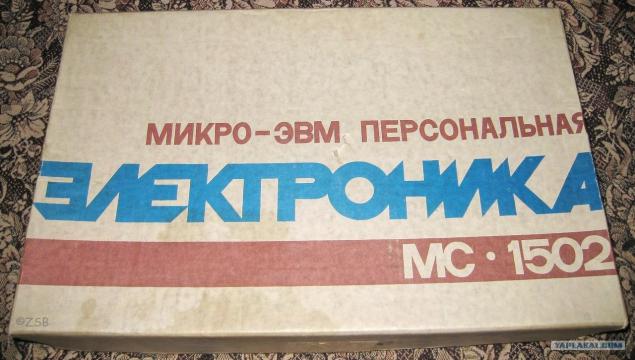
Source:
There will be 15 pictures.
1.

In the original looked like on prividёnnom FREEZE (that's useful when the digitized video):
Features such had (taken from the all-knowing Wiki):
CPU: KM1810VM88 at a clock frequency of 5, 33 MHz
Bit Processor: 16-bit
Data bus width: 8 bits
Memory: RAM - 128 KB, including video RAM
Video Display: CGA, 32K
Frequency of vertical synchronization: 50 Hz
The rate of input-output on magnetic tape: 1200 baud
The rate of exchange via the serial interface: 9600
The range of frequencies an audio signal generation: 50-16000 Hz
Number of channel expansion connectors: 2
Warm-up time after power is not more than 2 minutes.
Power Consumption: 30 W
Expansion Module RAM: 512 KB
2.

Actually, a little more detail about the processor, for those to whom the phrase "the CPU: KM1810VM88" says nothing. In fact it is a very distant relative of today's PCs. Surely many of you know about it when the popular "Pentium". Before them was a large family x86-s (eg 286, 386 and 486).
So, when it was 8086 and the first 16-bit processor. What would it udeshivit was created by the 8088 processor, which was essentially a 16-bit 8086, but all of its outer electron binding was 8-bit. A sort of a cripple, but the computer on it treated in the production cheaper.
What am I? And besides that KM1810VM88 is nothing like a Soviet clone of 8088!
Yes, there was a slow, hanging when he wanted to. But most DOSovkih games allow you to play. For example in the FREEZE GPCGA - AVTOS about Formula 1.
3.

Let us consider it in more detail, after more than ten years.
Top left - power LED. Power supply built. Top right - two slots expansion slots.
The keyboard is more or less clear to all (English layout conforms to current). Keys unusual Russified, but understand it is quite possible.
4.

As pictured above, it is clear that one of the lids slots missing, use this and look inside:
5.

Then look at the PC itself. On the side walls, front and nothing to the right. On the left is a switch built-in power supply unit (for some reason your computer does not turn off, but only disables):
6.

Well, most of the lard - is the rear interface panel.
Consider the left -napravo.
The most important element is, of course, the button Reset, Russified as "Reset».
"Magician" is not a magic jack, but only an interface to connect the recorder. But do not listen to music, and reading program (yes, before the tape was stored programs and data).
"Video" - to connect the monitor.
IRPR and IRPS - a domestic counterparts parallel and serial interfaces, ie Of LPT and COM, in modern computers (if at all).
7.

And most importantly - a factory label. By which we can say that the computer was made in February 1994 and was released at least 1875 pieces.
8.

Consider additional modules. Whom I have there already three. Ie the one you still unknown
The first and most important - a module with an additional 512 KB of memory (exactly polmegabayta), which together with the existing 128 KB 640 KB allows a posh.
In the photo attached to the comparison of the standard cartridge Dandy.
9.

He also compared with two modules of 2GB DDR2 each (a total of 16,000 gives greater volume at significantly faster speed of access).
10.

Then, most important, there is a floppy disk drive controller (a floppy disk), which allows you to connect to a PC for the five-inch floppy disk drive and work with them. Because if you can see from the performance characteristics, no hard drive from the computer and there is no trace. And to get started, after turning, it is necessary first of all to load DOS.
In the photo the same dendivsky cartridge. Flex interchangeable - soldered tightly.
11.

This is connected with the controller 5-inch disk drive. For comparison, on the right put the classic, well-known, but now almost extinct, 3-yoh inch floppovodik.
Immediately it should be said that the second photo sistemnik in its unique. Also at the photos and you will notice a subsequent cover of thick plexiglass (Bent over a candle or stove) for expansion modules.
And the system unit completely homemade (dad was a master of all trades). It consisted of power supply, the drive and the audio amplifier with speaker.
12.

Well, the mysterious third expansion module has been a kind of "random access memory", which in fact was a direct analog of the game cartridge, traditionally laid side by side. And what is written in it, we learn in the next photo
13.

The photo above is visible hendmeyd (ie, handmade) label that is stitched BASIC module K. What is K, hard to say.
Ie Having the computer and the module can be directly "out of the box" to start programming.
14.

And bonus. The original box is the miracle of the Soviet electronics.
Everything!
15.

Source:
